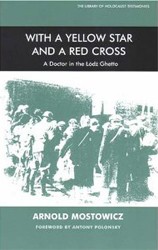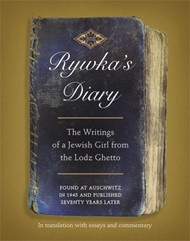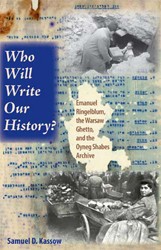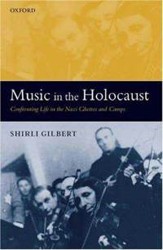Holocaust scholarship continues to reveal new layers and nuances of the experiences of the victims. Jews in Nazi-occupied Warsaw in 1940 were under tremendous threat as they were stripped of their rights and forced to live in a guarded and walled-in ghetto that was finally sealed off on November 16, 1940. At its largest, the ghetto contained over 480,000 Jews, most of whom were killed. Prior to the Nazi period, Warsaw was brimming with scholars, political activists, aspiring writers and actors and was the center of Jewish political and cultural activity. It was the seat of all major Jewish parties, youth movements, religious expressions, trade unions, research centers, publishing houses, and Zionist and Jewish socialist activity. It was also a city where assimilated Jews felt comfortable, trying to live a life of cultural ambivalence where no one culture or identity was dominant. Katarzyra Person in her fascinating and original study, Assimilated Jews in the Warsaw Ghetto, 1940 – 1943, focuses on the small but distinct group of assimilated, acculturated, and baptized Jews and tries to reconstruct the multitude of voices and experiences of this under-studied segment of ghetto inhabitants. These people generally had longstanding personal, professional, and often family contacts with the Polish milieu, spoke Polish fluently, often didn’t know or speak Yiddish and considered themselves part of Polish society. Unwilling to integrate into the Jewish community and, once the Nazis imposed their racial criteria, unable to merge with the Polish one, they formed a distinct group “living” a liminal existence in the ghetto. The Nazis chose their identity for them, but it remained an uncomfortable and strange one.
Having spent their lives proving their Polishness, being forced into the ghetto was particularly challenging psychologically as well as physically. Their investment in the possibility of integration into Polish society was shattered. Person explores the diversity of this group and how its members’ identities shaped their involvement in and contribution to ghetto life. Some attempted to merge with the community around them, with people whom they felt disassociated from or even ashamed of. Others remained apart from it, organizing a very successful communal life of their own, including Polish-language schools and cultural activities. They were in the ghetto but never really a part of ghetto society and were perceived by the majority as “privileged” Jews who because of their contacts with the Aryan side of Warsaw and familiarity with Polish society had a better chance of survival than the masses of traditional and religious Jews. In the social reality of the ghetto, where the norm was physical degradation, disease, and starvation, anything beyond what was absolutely necessary for survival was seen as a sign of privilege. As a result, they lived in a kind of moral “gray zone” in the eyes of many ghetto inhabitants. But Person effectively demonstrates that any perceived advantage must be understood in the context of a desperate and all-encompassing struggle for survival. In the end most of them were swept up in the great Aktion that began in July 1942 and were killed in Treblinka with their more traditional co-religionists. In this sense assimilation was a distinction without a difference. Person, in this informative, readable, and original work, adds to our understanding of the complexity of the social reality of Warsaw ghetto life and death.
Related Content:





